On February 1, 2013, Hiroshima University established two new programs: the “Distinguished Professors” (DP) program and the “Distinguished Researchers” (DR) program. Individuals who are part of these programs are recognized as senior and junior faculty members respectively, who are engaged in extraordinarily distinguished research activities.
A Conversation with Distinguished Researcher Hiromitsu Takahashi
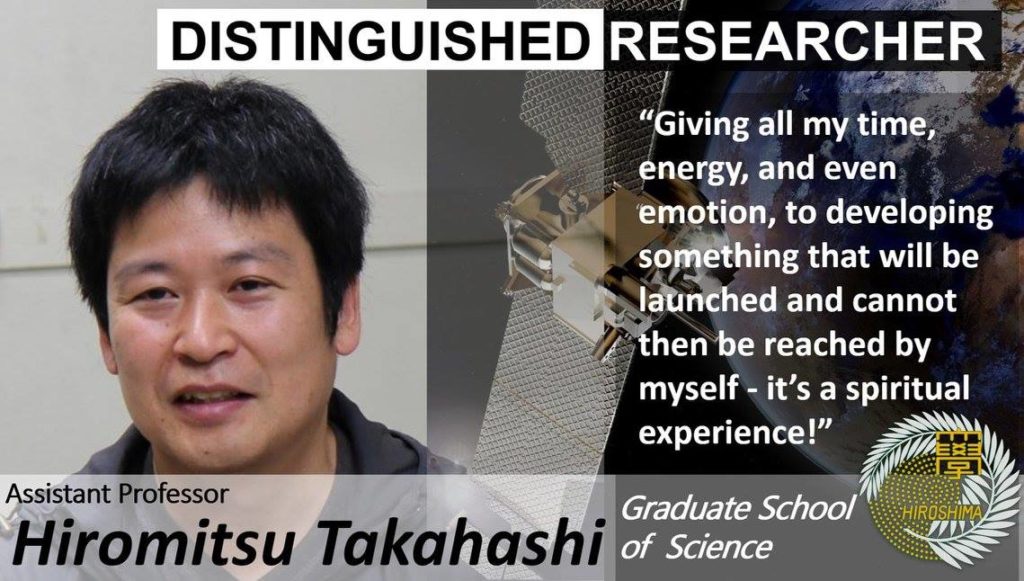
What is your name and specialty?
My name is Hiromitsu Takahashi, I study high-energy astrophysics. Mainly I observe celestial sources using satellites and balloons.
What are you working on right now?
Currently, we are developing a new type of satellite – it’s not so large, about 50kg, but it’s something very special. What we want to achieve cannot be done using anything larger.
Why are these small satellites so useful?
We are observing bright objects, but the direction they appear from is unpredictable. They could appear anywhere in the sky, perhaps once-per-day, but we really don’t know where to look. Therefore, we need to launch many small satellites to cover all regions simultaneously. One of these satellites also has special capabilities for measuring the polarization of gamma rays.
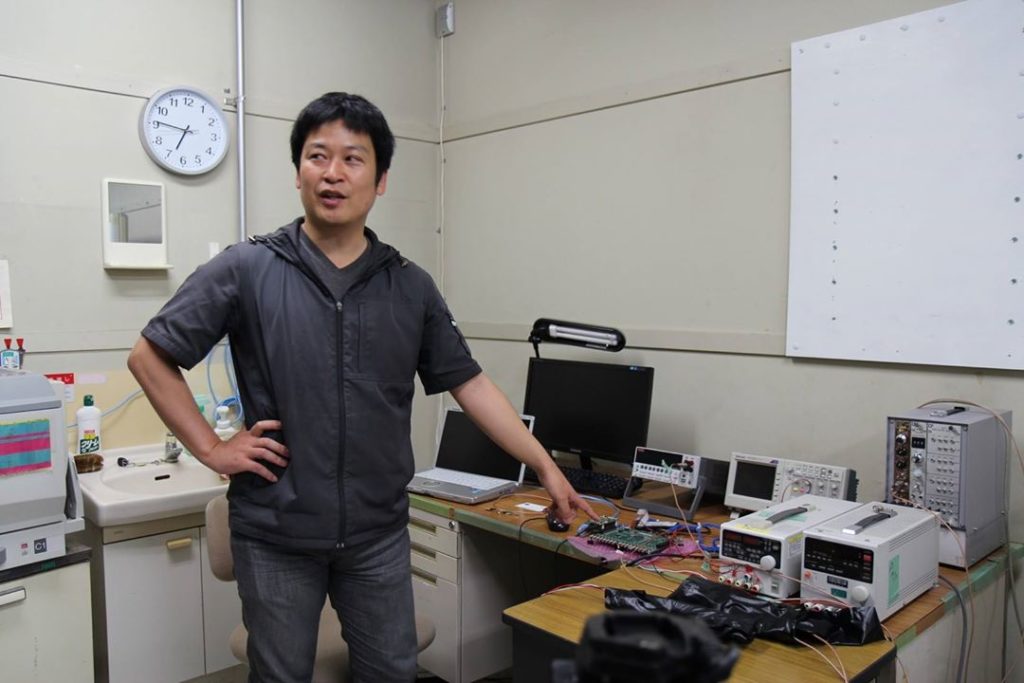
So you investigate electromagnetic waves in the sky; why?
The phenomenon we are concerned with is gamma ray bursts. These are high-energy beams of light travelling through the universe. For 50 years, we have known about them and we studied them as electromagnetic waves – but without polarization information. The observation of polarization can tell us about the geometry and magnetism of the origin of gamma-ray bursts. This information, which has alluded us until now, will help us understand where and how gamma-ray bursts occur.
Polarization measurements are new, and will add to our understanding of the physical parameters involved. It can’t be measured using traditional observations of image, spectrum, or timing, and such parameters are independent from the gravitational fields – it’s a completely new way of looking at things.
Additionally, we believe that these gamma ray bursts are emitted when massively powerful events occur, such as when a star collapses, or when two stars merge and collapse into one. These events could relate to some of the gravitational waves, which were detected in 2016 for the first time. Since we cannot predict the directions of either gamma-ray bursts or gravitational waves, we have to cover the whole sky with many satellites in order to find gamma-ray bursts in electromagnetic waves that may coincide with gravitational waves.
There are currently only several, very expensive, satellites monitoring these gamma-ray bursts – and they are not sufficient to cover the whole sky. With the launch of many, economical satellites to join them, we will be able to cover all directions.
And then, by studying the polarization of these rays – and finding more gamma-ray bursts, we can hopefully determine the origin of gamma-ray bursts and the gravitational wave sources.
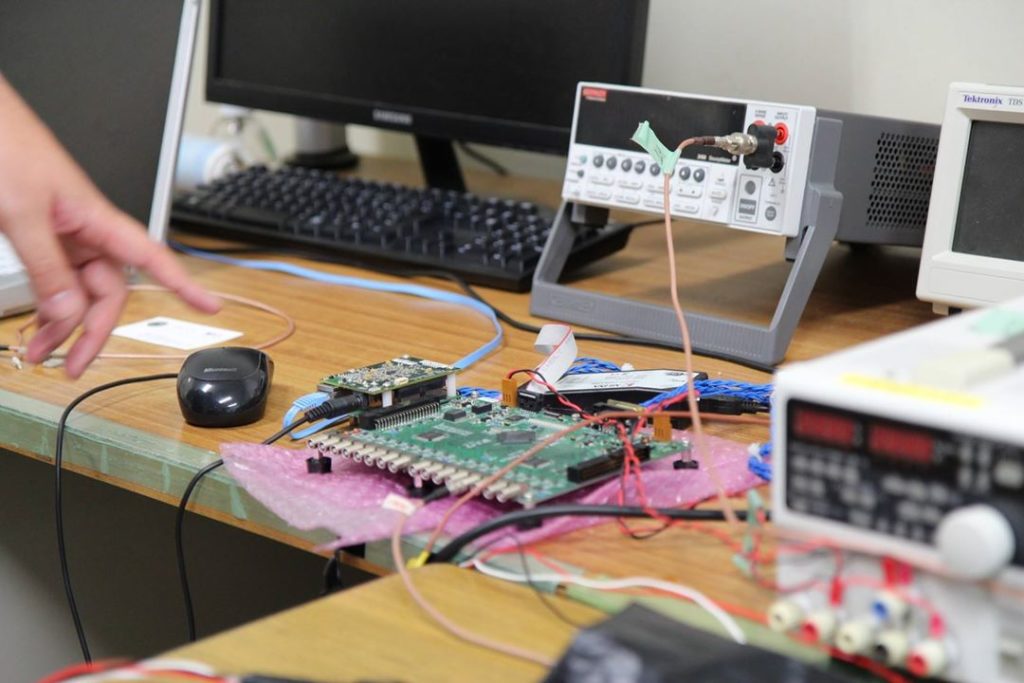
Why is what you do important for society?
Gamma ray bursts are very interesting because they consist of an intense jet of light formed from particles all following the same axis. These jets are so concentrated that they can penetrate stars and even reach to the ends of the galaxy. How to generate such a jet is still unknown. In addition, the origin of gamma-ray bursts, and gravitational waves, are uncertain. Thus, our satellites will help resolve the fundamental physics of astronomy.
What are you most proud of in your career?
I have measured the polarization, not from transient gamma rays, but from persistent sources – neutron stars (the collapsed core of a large star) and black holes. Such measurements help build a picture of their geometries, and magnetic fields.
Do you actually make the satellites yourself?
Well, yes. There are many different parts involved in a single satellite, but I’m mainly involved in developing the electronic recording parts for observing X-rays and gamma rays. This one [shows SCF an intricate circuit board] was onboard the balloon flight that flew last year to observe pulsars (a highly magnetic neutron star emitting radiation) and black holes.
Do you like working with electronics?
Ha, normally I do yes but sometimes it can be very complicated, sometimes it can be noisy and dirty also. We need to work really hard to resolve the infinite number of problems that can arise, but once everything is working fine it feels good.
Have you had any disappointments in your career?
Mmm yea – we experienced a failure with one of our satellites last year – the Hitomi satellite. Hiroshima University and I – everyone here, we worked hard on that satellite. But its operation finished when it broke up in orbit. Yea – it was a very bad situation at the time…
What lead you to astrophysics?
I grew up in Nara prefecture, where there are many historic cities – and many tombs! I became interested in the ancient era as a result, including dinosaurs etcetera. In my childhood Hailey’s comet appeared – it only appears every 80 years or so, and I was told it would probably be the only time I would have a chance to witness it. At that time, I started to take an interest in the sky above. I majored in science and heard that there was a course where you could learn to develop space-monitoring instruments, being launched. When I heard that such instruments would be orbiting the earth, I was very interested. From that point on, I have been investigating astrophysics.
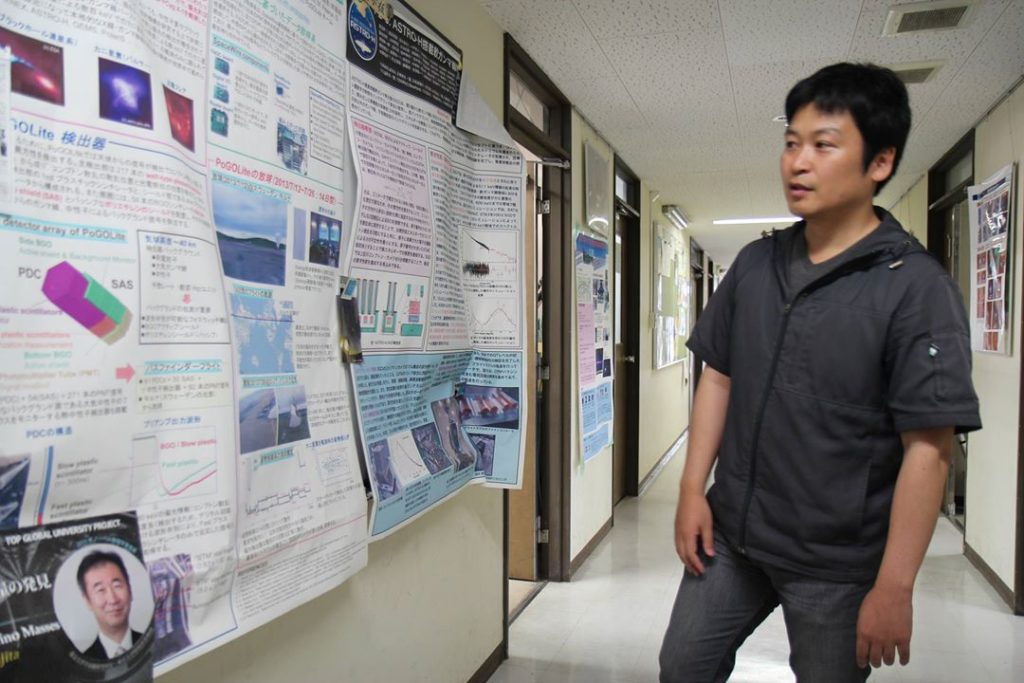
So as a child, you were interested in dinosaurs and tombs – symbols of death and the past, now you are interested in space, the future, and infinity – is there any connection in your mind?
I am not sure that there is. It would be nice to say it is connected in some way to the Japanese traditions of cyclical life, but I’m not sure – maybe…
Do you point out your satellites to others when they pass in the night sky?
Ha, I have never talked to my relatives or friends about my satellites. I sometimes point out some of the many other satellites or celestial bodies up there, but none related to my research.
How is working at HU?
Of course, it is good or I would not be here! The positives are that it is set in wonderful natural scenery, and yet is close to the city. Also the there are many sake breweries nearby so I love this area!
All the astrophysicists here work closely as a team – the optical team, theoretical team, and our high energy group are all working as one, it’s good.
“All the astrophysicists here work closely as a team – the optical team, theoretical team, and our high energy group are all working as one, it’s good.”
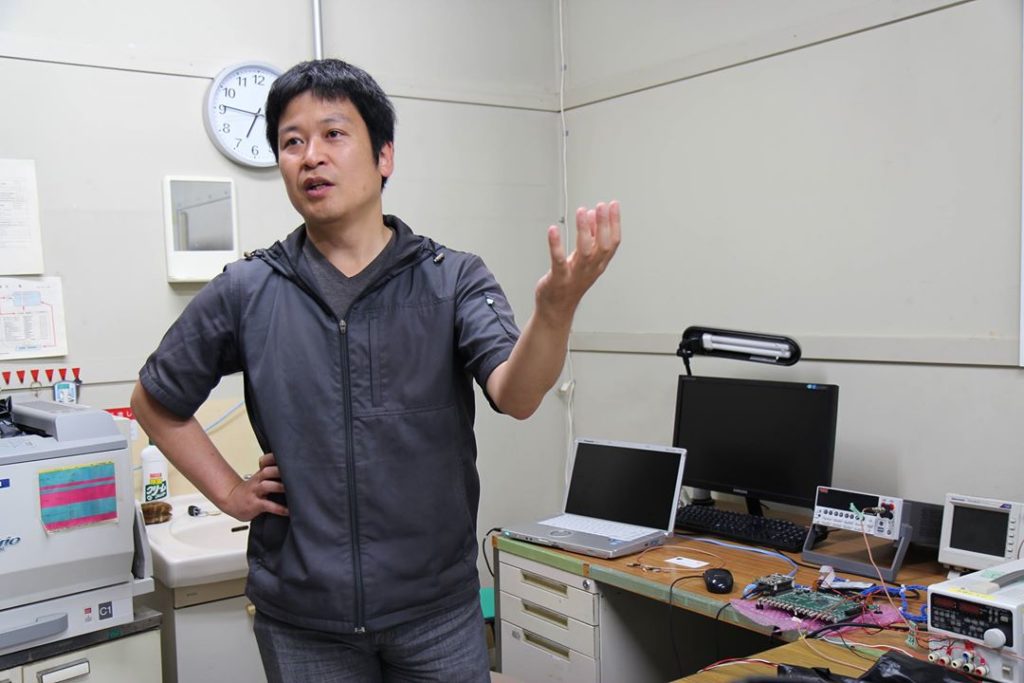
And, outside of work what do you do? Does it involve Sake?!
I became a father recently so I am a bit busy looking after my son, but previously I enjoyed travelling all over Japan. I have travelled all over Hokkaido and the entire coast of Kyushu from north to south. I have visited all of Japans 47 prefectures with friends.
I am lucky now that I know many researchers all over the world so when I visit them we can visit interesting sights as well as discuss research.
Do you feel it is important to travel?
I think so. Especially for people involved in our type of research which is completely removed from normal life. Studying the stars or considering fundamental physics is not what most people would consider real life. To travel and to experience different things – it makes us more human I think.
In many parts of Japan, it can be difficult to see the stars due to light pollution. Do you think this removal of the cosmos from our daily lives gives us an inflated idea of our own importance to the universe?
I spent 10 years in Nara prefecture which has very clear skies, but after that, I spent 20 years in Tokyo. At that time I started developing satellites, and to be honest it didn’t matter for me that I couldn’t see the stars with my own eyes as I was absorbed in the cosmos through my science.
For the public they are still interested in things like solar eclipses and comets passing by, planetariums are popular. As long as there is some interest, I don’t think it matters that we can’t see stars from the cities.
What do you see yourself doing in five years time?
We hope to launch our next satellite in 2021, so that will keep me occupied for all of that time.
Beyond that, I would like to work on improving detection instruments. What we do might seem very futuristic but we are still constrained by very basic problems. I would like to work on decreasing the weight of the objects and find ways to reduce vibrations, which can damage these very expensive pieces of equipment.
If you could do anything outside of academia, what would it be?
I would like to teach young children, kindergarten or elementary, and make them believe they can achieve anything in life. If they believe that early on, their knowledge will vastly exceed mine with time – this is real progress.
What is the one thing you really love about job?
Giving all my time, energy, and even emotion, to developing something that will be launched and cannot then be reached by myself. It’s a spiritual experience!
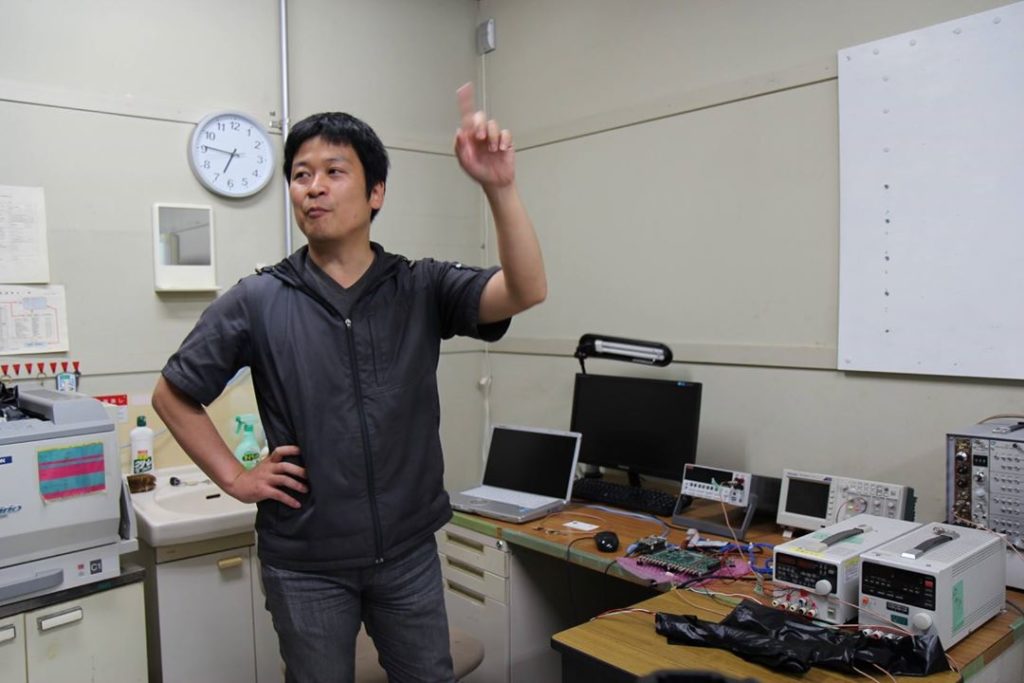
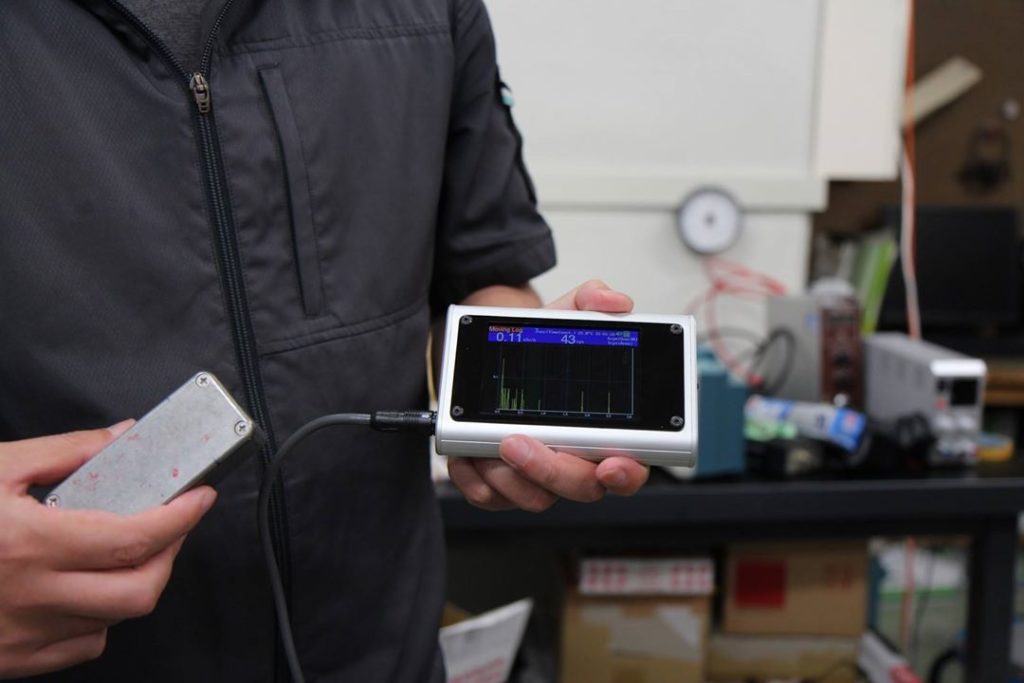
Read more articles on Distinguished Professors / Researchers here
Written by Richard J. O'Connor (Hiroshima University Science Communication Fellow)
Find out more about Assistant Professor Takahashi, and how to contact him, here: http://seeds.office.hiroshima-u.ac.jp/profile/en.975b6969708d4c62520e17560c007669.html

 Home
Home